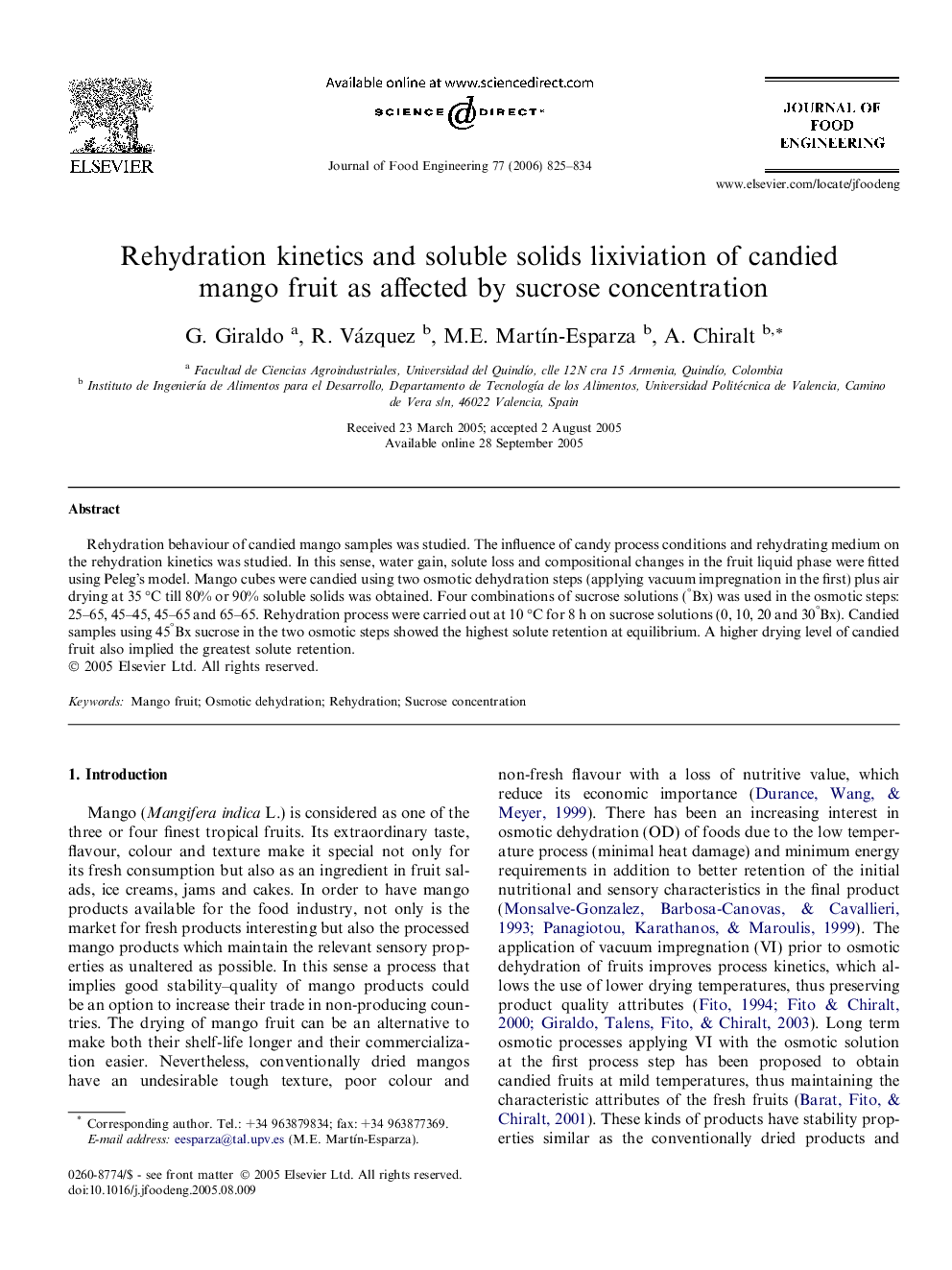| Article ID | Journal | Published Year | Pages | File Type |
|---|---|---|---|---|
| 226538 | Journal of Food Engineering | 2006 | 10 Pages |
Rehydration behaviour of candied mango samples was studied. The influence of candy process conditions and rehydrating medium on the rehydration kinetics was studied. In this sense, water gain, solute loss and compositional changes in the fruit liquid phase were fitted using Peleg’s model. Mango cubes were candied using two osmotic dehydration steps (applying vacuum impregnation in the first) plus air drying at 35 °C till 80% or 90% soluble solids was obtained. Four combinations of sucrose solutions (°Bx) was used in the osmotic steps: 25–65, 45–45, 45–65 and 65–65. Rehydration process were carried out at 10 °C for 8 h on sucrose solutions (0, 10, 20 and 30°Bx). Candied samples using 45°Bx sucrose in the two osmotic steps showed the highest solute retention at equilibrium. A higher drying level of candied fruit also implied the greatest solute retention.
